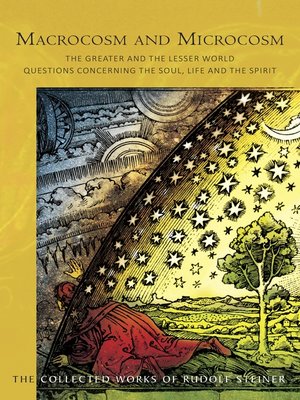Macrocosm and Microcosm
ebook ∣ The Greater and the Lesser World. Questions Concerning the Soul, Life and the Spirit
By Rudolf Steiner

Sign up to save your library
With an OverDrive account, you can save your favorite libraries for at-a-glance information about availability. Find out more about OverDrive accounts.
Find this title in Libby, the library reading app by OverDrive.



Search for a digital library with this title
Title found at these libraries:
| Library Name | Distance |
|---|---|
| Loading... |
Rudolf Steiner shows how deeply and intimately human beings, the microcosm, are related to the macrocosm. But for Steiner the macrocosm is more than just the physical universe. It includes many hidden realms – like the world of Elements and the world of Archetypes – which lie behind outer manifestations such as our physical body. The macrocosm works within us continuously – in the daily alternation between sleeping and waking and in the great cyclical interchange between incarnation on earth and our time between death and rebirth. Steiner discusses the various paths of self-development that lead across the threshold to spiritual dimensions, transforming human soul-forces into organs of higher perception. In future we will even have the capacity to evolve a form of thinking that is higher than the intellect – the thinking of the heart. In this classic series of lectures, now retranslated and featuring a previously-unavailable public address, Rudolf Steiner also discusses: the planets and their connection with our sleeping and waking life; the inner path of the mystic; the 'greater' and 'lesser' guardians of the threshold; the Egyptian mysteries of Osiris and Isis; initiation in the Northern mysteries; The four spheres of the higher worlds; mirror-images of the macrocosm in man; the strengthening powers of sleep; the symbol of the Rose Cross; reading the Akashic Record; four-dimensional space; the development of future human capacities, and much more. The volume includes an introduction, notes and index.







